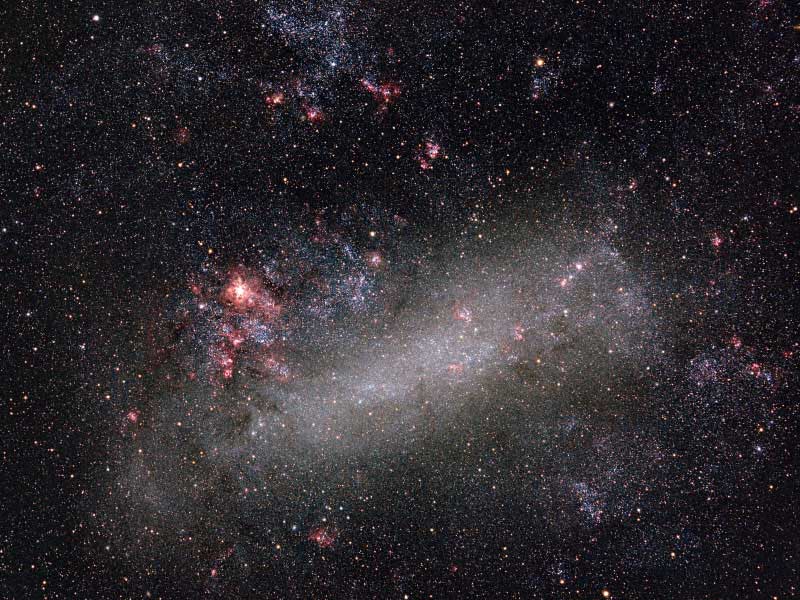Credit & Copyright: Wei-Hao Wang
(IfA, U. Hawaii)
Explanation:
Portuguese navigator
Fernando
de Magellan and his crew had plenty of time to study the
southern sky during the first circumnavigation of planet Earth.
As a result, two fuzzy cloud-like
objects easily visible for southern hemisphere
skygazers are known as the
Clouds of Magellan.
Of course, these star clouds are now understood to be
dwarf irregular galaxies,
satellites of our larger spiral
Milky Way galaxy.
The Large
Magellanic Cloud (LMC)
pictured above is only about 180,000 light-years distant in
the constellation
Dorado.
Spanning about 15,000 light-years or so, it is
the most massive of the
Milky Way's satellite galaxies
and is the site of the
closest
supernova in modern times.
The prominent red knot on the right is 30 Doradus, or the
Tarantula Nebula, a giant star-forming
region in the
Large
Magellanic Cloud.
1999 2000 2001 2002 2003 2004 2005 2006 2007 2008 2009 2010 2011 2012 2013 2014 2015 2016 2017 2018 2019 2020 2021 2022 2023 2024 2025 |
Yanvar' Fevral' Mart Aprel' Mai Iyun' Iyul' Avgust Sentyabr' Oktyabr' Noyabr' Dekabr' |
NASA Web Site Statements, Warnings, and Disclaimers
NASA Official: Jay Norris. Specific rights apply.
A service of: LHEA at NASA / GSFC
& Michigan Tech. U.
|
Publikacii s klyuchevymi slovami:
LMC - dwarf irregular galaxy - Bol'shoe Magellanovo Oblako - karlikovaya galaktika - Nepravil'naya galaktika
Publikacii so slovami: LMC - dwarf irregular galaxy - Bol'shoe Magellanovo Oblako - karlikovaya galaktika - Nepravil'naya galaktika | |
Sm. takzhe:
Vse publikacii na tu zhe temu >> | |
